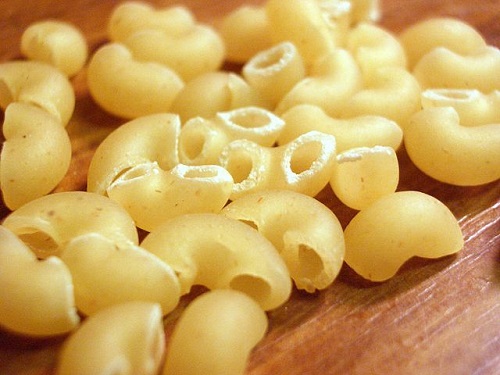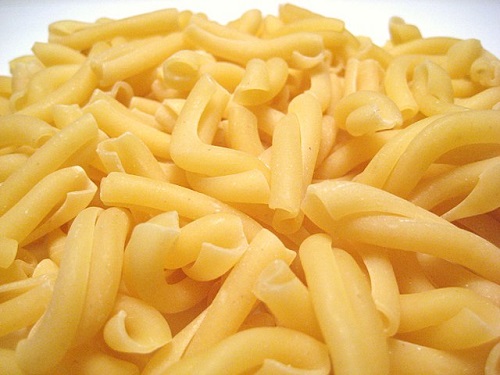Differences Between Pasta and Macaroni
Macaroni and pasta are common food products in Italy and the surrounding countries. However, it is important to note that the two dishes are commonly used in other parts of the world due to globalization and the movement of Italian people to other parts of the world. People have been experiencing difficulties in showing the difference between macaroni and pasta due to their significant number of similarities in taste and physical appearance. However, macaroni and pasta exhibit a number of differences that people ought to understand.
Pasta refers to an Italian dish that is prepared by the use of unleavened dough of wheat flour. The dough is prepared by the use of flour and water or eggs mixed together to form various shapes that are cooked by either boiling or baking. A staple food has been in use for many years originating from Sicily and later spread to other regions of Italy.
-
What is macaroni?
Macaroni is a traditional food product that is formed by the use of dough, which is made by the use of flour, water, and eggs after which it is formed into different shapes. It can be simply put that macaroni is a dry pasta. Lastly, a curved macaroni is mostly referred to as elbow macaroni, which is popular among young children.

Differences Between Pasta and Macaroni
-
Shape and Appearance of Pasta and Macaroni
Despite showing a significant number of similarities between pasta and macaroni, shape and appearance demonstrate one of the significant difference between the two dishes. It is important to note that pasta appears in different shapes that one may figure out. On the other hand, macaroni only appears in one shape. While pasta appears in many shapes, which are attributed with to the designer or the person preparing such products, macaroni appears in a slightly curved hollow tube, which resembles the English alphabet ‘C’. Were it not for the shape and appearance, there would be no difference between pasta and macaroni which means that macaroni and pasta are basically the same.
-
Production Technique of Pasta and Macaroni
The method of production varies between macaroni and pasta. Although the basic preparation and the ingredients between pasta and macaroni are the same, the technique of production brings about significant differences. Since pasta is formed in many shapes which can only be attributed to the discretion of the person preparing them, manual labor which includes preparing them with hands is done. On the other hand, due to the ‘C’ shape and the tube, which demonstrates the shape of macaroni, only machines can be used to produce these products. Therefore, macaroni is prepared by use of machines making it to possible to produce macaroni commercially unlike pasta, which is produced by hands making it difficult to be produced commercially.
-
Popularity of Pasta and Macaroni
Although both pasta and macaroni are popular wheat products around the world, macaroni is more popular than pasta. Macaroni is a household name in America and the European regions while at the same time gaining a significant influence in the African region. The reason why macaroni is popular can be attributed to the fact that it can be commercially be produced hence allowing it to be distributed to other parts of the world. However, pasta is not very popular owing to its difficulties in commercial production. Moreover, pasta is produced differently in other parts of the world hence making it a regional food product. For example, the Asian pasta is prepared by the use of rice, mung, buckwheat egg, and lye unlike other pasta dishes, which are made by the use of flour, water, and eggs.
-
Shelf Life of Pasta and Macaroni
The other difference between macaroni and pasta is that the two dough products have a different shelf life. Macaroni has a longer shelf life while pasta has a shorter shelf life. Pasta is made using different ingredients and remains moist or wet which makes it attract different aspects within the surrounding which makes it go bad easily. Moreover, the moisture content of the product attracts mound hence making the product to go bad easily. On the other hand, macaroni is dried which removes the moisture content hence making the product to have a longer shelf life. In addition, the product is made by the use of machines, which makes it possible to be added preservatives making it last longer. This explains why macaroni is easily distributed worldwide using roads and other methods of transport food products.
-
Different Ingredients in Pasta and Macaroni
The number of ingredients used in the preparation of either pasta or macaroni is significantly different. Although the basic components in the preparation of standard pasta and macaroni involve wheat and water, the preparation of pasta sometimes comprises the addition of eggs while macaroni does not involve the addition of eggs. Since pasta is consumed while fresh, it is possible to add eggs hence enhancing the flavor and taste of the product. However, it is not possible to add eggs to macaroni since the addition of eggs will lower the shelf life of the product. Lastly, it is worth noting that there are more than 600 different varieties of pasta with respect to regional preference or marketing decisions.
Table Showing Differences Between Pasta and Macaroni
Characteritics |
Pasta |
Macaroni |
| Shelf Life | Perishable/Shorter shelf life | Longer Shelf life |
| Ingredients | Wheat, Water, Rice, Lye, and Eggs etc. | What and Water |
| Popularity | Regionalized | Very Popular in the World |
| Shape and Appearance | Appears in Different Shapes | Narrow and Hollow C shaped |
| Production Techniques | Production Based on Consumption | Commercial Production |
Summary of Pasta and Macaroni
- Apparently, it has been difficult to show the difference between pasta and macaroni due to the method of preparation used and the similarity of the ingredients required for the preparation of both dishes.
- However, there is significant number of differences that can be used to demonstrate the difference between the two products, which ranges from different shelf life, popularity, production techniques, shapes, and appearance.
- In summary, it is important to understand that macaroni is a dry pasta. The bottom line is that all macaroni is pasta but not all pasta is macaroni.
- Difference Between Gross NPA and Net NPA - April 20, 2018
- Difference Between Job Description and Job Specification - April 13, 2018
- Difference Between Yoga and Power Yoga - April 10, 2018
Search DifferenceBetween.net :
2 Comments
Leave a Response
References :
[0]Hahn, David. "The Changing World Of Pasta - Regulatory Challenges For Blended Pasta Products." CFW Plexus, no. AACCI 2011 Annual Meeting, 2012, Scientific Societies, doi:10.1094/cplex-2011-1008-03w.
[1]Kaur, Gurkirat et al. "Functional Properties Of Pasta Enriched With Variable Cereal Brans." Journal Of Food Science And Technology, vol 49, no. 4, 2011, pp. 467-474. Springer Nature, doi:10.1007/s13197-011-0294-3.
[2]Li, Man et al. "Natural Additives In Wheat-Based Pasta And Noodle Products: Opportunities For Enhanced Nutritional And Functional Properties." Comprehensive Reviews In Food Science And Food Safety, vol 13, no. 4, 2014, pp. 347-357. Wiley-Blackwell, doi:10.1111/1541-4337.12066.
[3]"Image Credit: https://en.wikipedia.org/wiki/File:Strozzapreti_Pasta.JPG"
[4]"Image Credit: https://en.wikipedia.org/wiki/File:Macaroni_closeup.jpg"


In the beginning, it says macaroni is made with flour, water, egg’s. Then towards the end, it says macaroni is not made with eggs, due to it would shorten the shelf life. ??
Article contradicts itself, saying firstly that eggs are in macaroni in the “what is macaroni” paragraph, then later saying that macaroni does not contain eggs!
Confused
Jon Webb